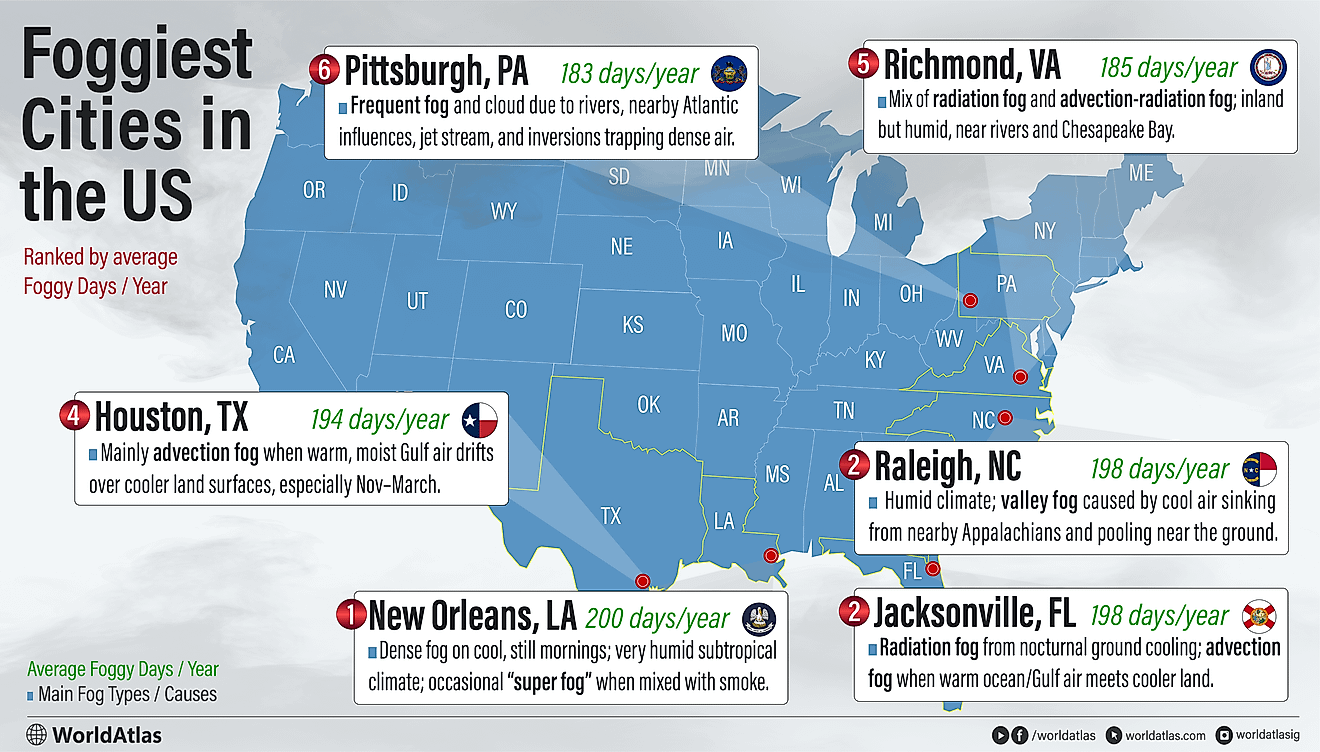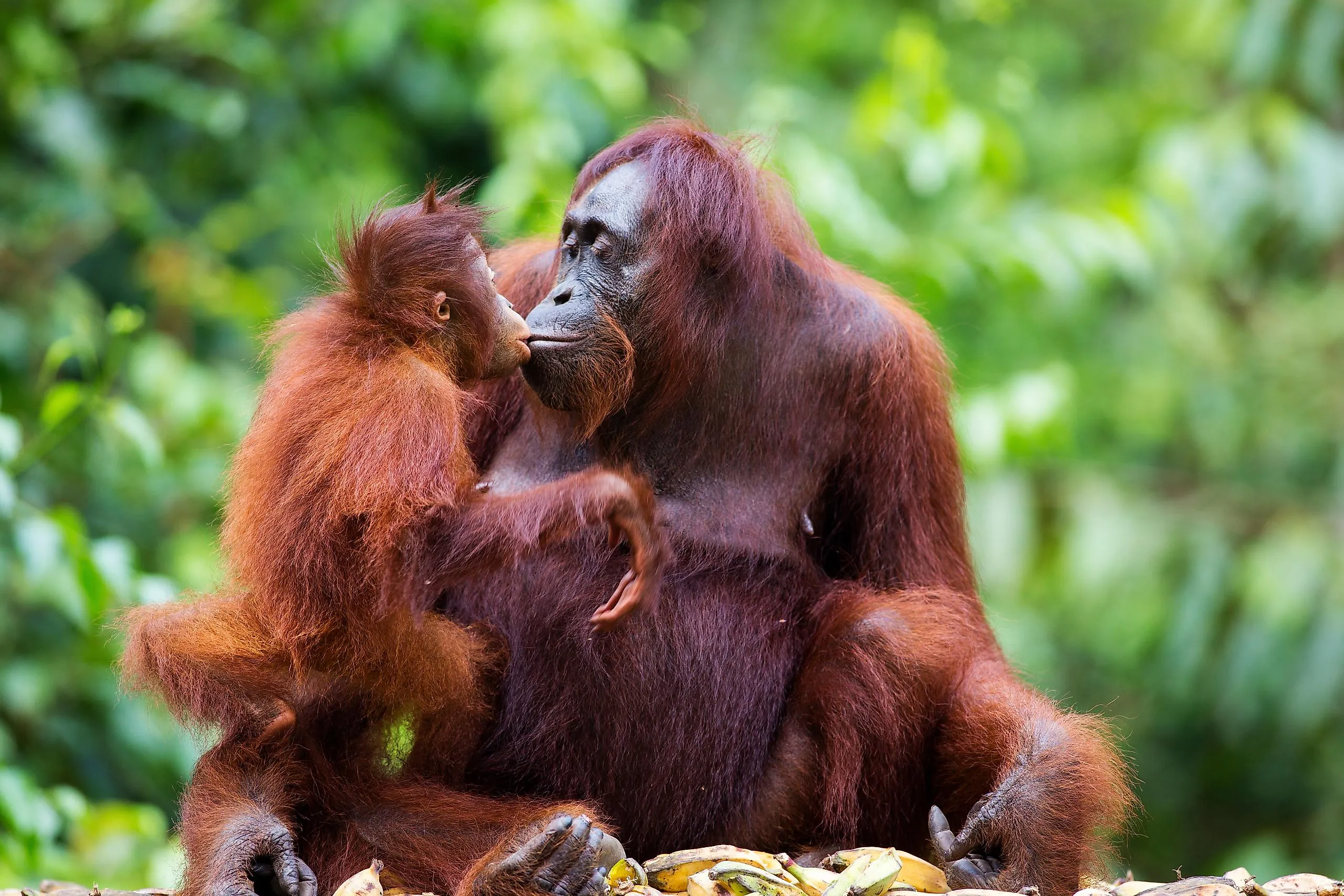
Orangutan
One of the most intriguing and intelligent animals to ever exist, the orangutan derives its name from the Malay word for "man of the forest." Orangutans live ninety percent of their lives in the treetops of the majestic forests of Southeast Asia's Sumatra and Borneo. Typically found 1,500 meters above sea level, these special animals are known for much more than just representing King Louis in the Jungle Book.
Habitat And Origin
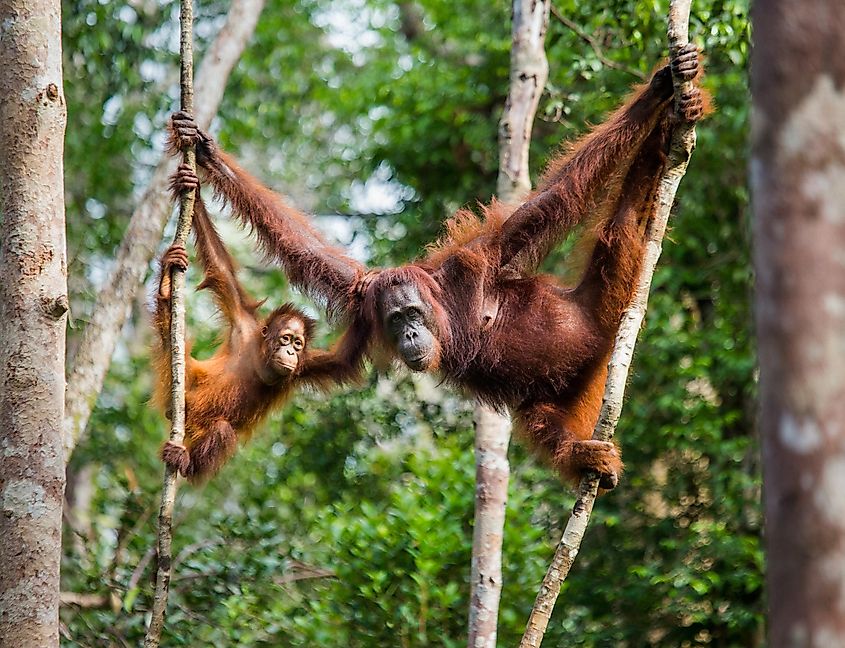
Orangutans live in primary and secondary tropical forests located in Southeast Asia. Typically found in Malaysia and Indonesia, these long-armed, orange-haired mammals have characteristics that are very similar to humans. Living in rich and deep forests, they prefer flooded plains or river valley forests as they provide rich land for foraging their nutrients like wild fruits such as lychees and figs. Orangutans sleep and live in the trees. They build nests on top of the treetops, much like little forts that can be thrown together in minutes. These animals enjoy a warm climate, with temperatures ranging from 18 to 38 degrees Celsius. The warm and humid rainforest climate creates a perfect environment for the orangutans to play amongst the trees, grab fruit and enjoy their relaxed lifestyle.
Characteristics And Diet
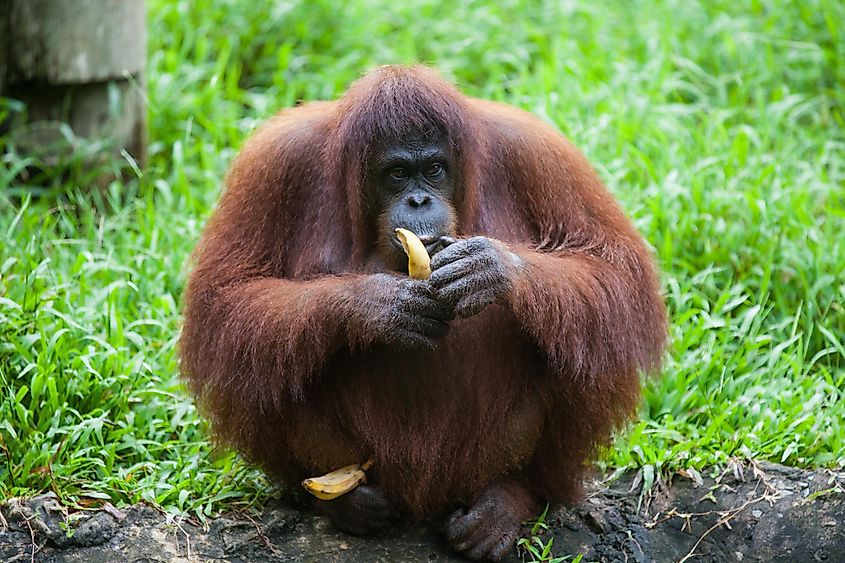
Orangutans can grow up to around 200 lbs, and their arms surpass their legs in length. They can grow from 1.10m to 1.40m tall and are mainly frugivorous but also eat other plant parts and small animals such as ants, termites, bird eggs, etc. They are bigger than a monkey but smaller than a gorilla. These mammals spend much of their time searching for food and nourishment. Orangutans are active during the day time, living in the canopy among the trees, high above the forest land. They use all four limbs and hook-shaped hands to carefully meander and grasp their way through the treetops. Males have a throat sac and large cheeks to make calls to their neighboring orangutans. The amount of food depends on the rainfall; on average, there is about 14 feet worth of rainfall each year to nourish the Orangutans' surrounding environment. A very intelligent mammal, they use the surrounding nature to create shelters from the rain for the evening and even add soft spaces like leaf piles for cushions.
Communication And Social Life
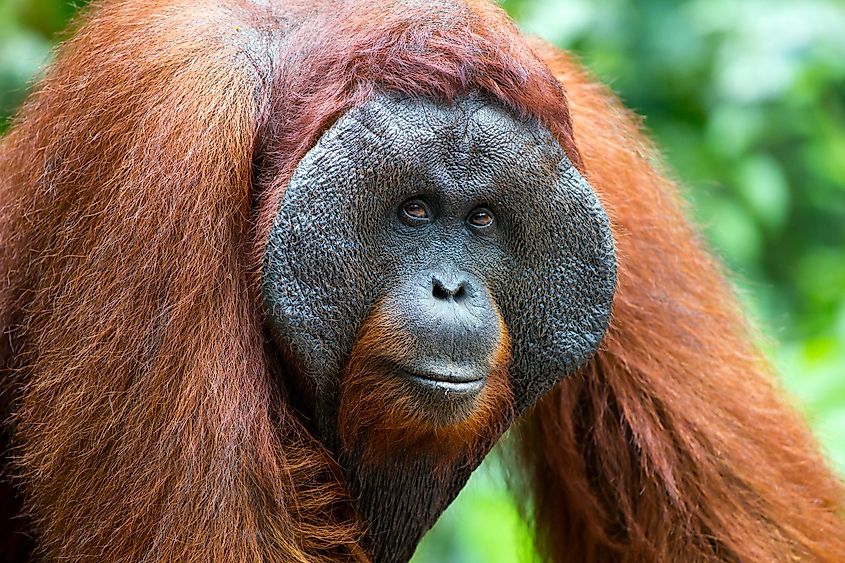
Orangutans don't live in large groups like other, more common chimpanzees. The males typically move between areas in order to mate with other females. Bornean orangutans are more likely to be found on the land, while Sumatran orangutans are known to have closer social bonds and somewhat differ in their appearance because of their longer beards. The male will make a call using their throat sac, which can be heard at least 1 km away. At night, the orangutans effortlessly create little nests to sleep in. Similar to other great apes, orangutans are extremely smart, using tools and communicating together. Typically docile and agreeable, the orangutans have been witnessed to have the capacity for aggression with each other. Mothers spend a lot of time with their babies, and they socialize within their same age group. Orangutans have verbal and nonverbal communication methods but only use the verbal in situations where they must signal a long distance. These loud calls can be over a minute long, signaling other orangutans to help them protect their young from stressors, predators, or an upcoming storm. Similar to humans, orangutans will play and actually laugh, which appears similar to a human laugh.
Behavior And Reproduction
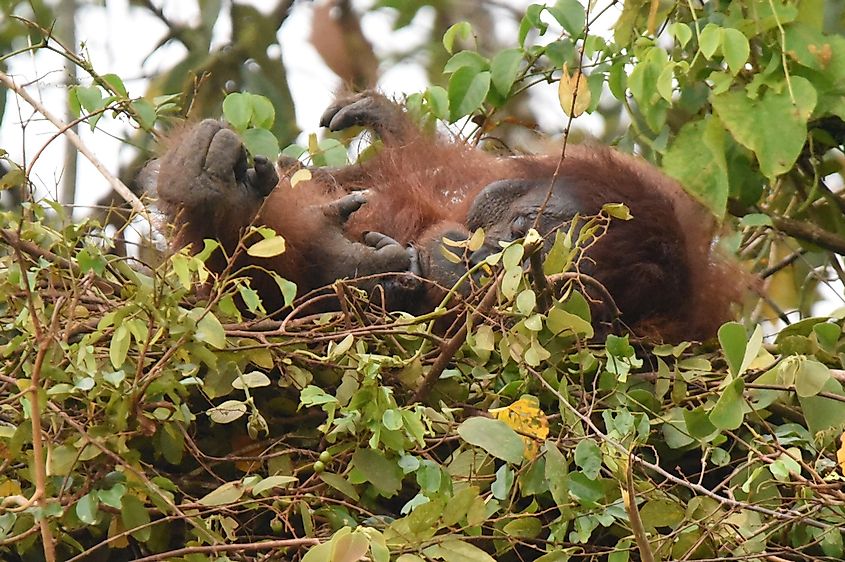
Like humans, female orangutans are pregnant for about eight and a half months. They have one offspring at a time and about four throughout their lifetime, but twins do occur even though it is rare. The fertility of female orangutans declines around age 30. They typically give birth at least 30m above the ground in the treetops, where they make nests created especially for birthing. Once the babies are born, their mothers are their only form of transportation and support. Orangutans are nursed similarly to human babies, and at around three months old, they can start eating soft foods. At age three, the baby orangutans move into their own nests, although their mothers are nearby, usually sitting up in the same tree. Like humans, children move into adulthood around 15-18 years of age but frequently visit their mother until their completely solitary lifestyle begins. The females will stick around the same collection of trees, while the males start moving when they develop the cheek pads that allow them to make long calls through the forest.
Conservation

The greatest threat to the orangutan is deforestation, as they are continuously losing more and more of their habitat, giving them less space to expand. Over time, the loss of land has impacted the orangutans' ability to procreate. Some sections of forested habitats occupied by orangutans are now protected to ensure the species can continue to thrive without being obstructed by human activity like logging. Females can only reproduce a small number of offspring throughout their lifetime, making it difficult to maintain a rising population rate. When orangutans can't find the food they need in the forest, they enter areas like farms and agricultural spaces that put them at risk of being hunted by humans for becoming a nuisance.
Orangutans are powerful, fascinating, and intelligent mammals that are close relatives of humans, making them a vital source of human evolutionary knowledge. Humans are attracted to these similar qualities and have seen the benefits and importance of sustaining the species. Efforts towards deforestation and maintaining an abundant habitat for the orangutans are vital to their survival. A loveable and nurturing mammal, orangutans are important to maintain a functional ecosystem where they live, allowing humans and other species to have a stable future.










